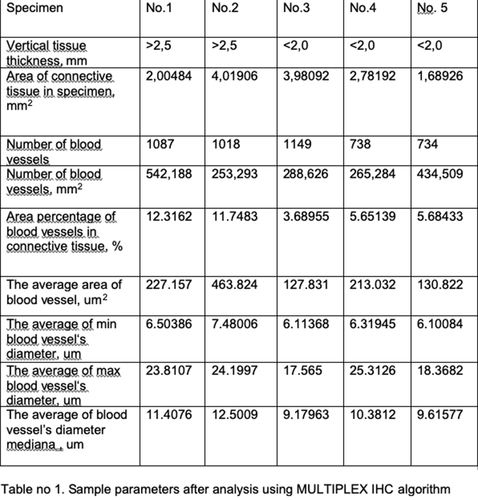Evaluation of histologic properties and blood supply of vertically thin and thick gingiva
OWM7I ePOSTER BASIC RESEARCH
Background: Crestal bone stability is one of the most discussed topics in implant dentistry. It is known, that biologic width formation is one of the factors responsible for early crestal bone loss. Studies show that implants with surrounding thin soft tissue show more bone loss, than when thick tissues are present. There is a lack of evidence which can explain about its etiology, morphology and factors, influencing vertical gingiva thickness formation.
Aim/Hypothesis: The aim of this study was to evaluate histologic differences between vertically thick and thin gingiva.
Materials and Methods: The permit was given by Lithuanian Bioethics Committee. Vilnius University Hospital Zalgiris Clinics patients. Selection criteria: 1)min. 18 years old; 2)no medical contraindications for implantation; 3)edentulous gap for min. 1 implant in mandibula; 4)fully healed bone; 5)good oral hygiene; 6)no signs of periodontitis; 7)signed consent for participation. Final number of patients was included. Under local anesthesia of articaine 4% 1.4 ml samples were taken and fixed in buffered 37% formalin sol. for 24 h and replaced into 70% ethanol sol. Decalcification was made in histoprocessor. All samples were put in cassette and 700 ml EDTA sol. Settings: 50°C temp. and 24 h duration. After cassettes were washed by running H2O. All samples were put in 10% formaldehyde sol. till the tissue processing. For immunohistochemical research Monoclonal Mouse Anti-Human CD31 were used. For visualization—EnVisionTMFLEX system. Analyzed using Indica Labs HALO program with OBJECT COLOCALIZATION algorithm.
Results: Five tissue samples were identified and analyzed. Differences seen in number of blood vessels in mm2, thickness of connective tissue and diameter of blood vessels. (Table No.1)
Conclusions and Clinical Implications: Within the limitations of this pilot study, findings suggest that vertically thick gingiva is histologically different from thin gingiva. Most important difference is seen in the amount of connective tissue, blood vessels and their size. Due to better blood supply, thick tissues may have superior regeneration and nutrition possibilities, than thin tissues. More studies with large sample size are needed to approve the findings.
Keywords: Vertically, Gingiva, Histological, Thickness, Blood





